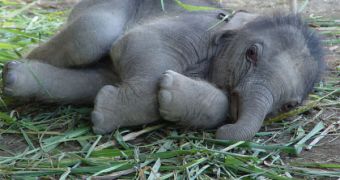Apparently Mother Nature created the perfect metabolic rate, to which all living things on earth must come close enough, in order to survive. This is the conclusion scientists from Petersburg Nuclear Physics Institute in Russia came to, after examining the metabolic rates of more than 3,000 plant and animal species worldwide. Bacteria and other basic-structured organisms were also included in the experiment, in an attempt to determine the variations present in metabolisms of very different lifeforms.
Depending on their size and structural complexity, animals usually take up about 3 to 90 watts of energy to function properly. An elephant, for instance, uses 1 watt per kilogram of biomass to sustain itself. The smallest bacteria in the study use 4 watts of energy per kilogram, even though the body mass difference between the two species is extremely big. These results cast some shadows on former discoveries, which stated that small organisms used energy much more effectively than larger ones, as the latter have to distribute it through a much larger body.
Peter Reich, an ecologist at the University of Minnesota, made a fairly interesting comparison. He stated that a heap of bacteria the size of an elephant would consume the same amount of energy an actual elephant would, while idle. This leads to the conclusion that all biomass revolves around the same values for metabolic rates.
Evolutionary biologists say that this could offer new insight into the way nature selects adapted species to survive natural disasters or harsh environmental conditions. "Organisms that lie close to this value may be the fittest to survive," said Anastassia Makarieva, scientist at PNPI and leader of this study, referring to the small range of variations that seem to somehow contain all living species on Earth. She says that by distancing themselves from these values, species are at risk to become extinct or unable to adapt to change.

 14 DAY TRIAL //
14 DAY TRIAL //